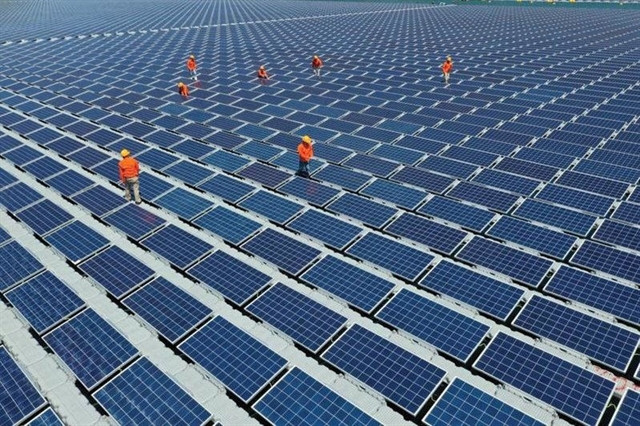HCM City (VNS/VNA) - National electricity demand is expected to increase by 8.5 percenta year until 2025 and 7 percent until 2030, making Vietnam an attractive marketfor foreign energy investors.
The economy is expected to grow at 6.5-7.5 percent annually until 2030, andwould require 90,000MW of power by 2025 and 130,000MW by 2030.
At the 2020 Vietnam Energy Summit in July in Hanoi a number of deals for investmentin energy projects were signed, including the memorandum of understandingby the Copenhagen Infrastructure Partners, Asiapetro and Novasia Energy withthe Binh Thuan Provincial People’s Committee to develop the3.5GW La Gan offshorewind power project at a cost of 10 billion USD.
Many investors said Resolution No 55-NQ/TW for strategic orientations fornational energy development through 2030 has created a favourable environmentto invest in the country’s power sector.
The resolution prioritises renewable and clean energy, offering foreigninvestors a great opportunity, experts said.
Hoang Tien Dung, Director of the Electricity and Renewable Energy Authority, said:“Existing regulations allow the [sale] of projects to eligible foreigninvestors. Transferring projects and changing shareholders need approval fromthe Ministry of Planning and Investment or the Department of Planning andInvestment depending on scale."
As of May 11 Vietnam had 92 solar and 10 wind power plants with a totalcapacity of nearly 6,000 MW in operation, according to the Department ofElectricity and Renewable Energy.
A number of them have been sold partially or wholly to foreign investors fromThailand, the Philippines, China, Singapore, and Saudi Arabia.
Coal and gas power projects are invested under the build-operate-transfermodel with Government guarantees, but solar and wind power projects do nothave such guarantees.
Foreign investors, with their great experience and capability in investing inand managing plants bring investment efficiency and thus greater benefit tosociety.
The development of renewable energy is helping reduce dependence on costlyoil-fired power plants and greenhouse gas emissions.
Feed-in tariffs (FIT) for solar power were considered too high, and thoughthey fell quickly as technology improved from 9.35 US cents perkilowatt-hour in 2017 to 7.09 cents last year for plants on land, they remainquite high compared with other countries.
According to Nguyen Tam Tien, General Directorof Trung Nam Group, one of the leading wind power producers with 12 projectsunderway in Vietnam, wind power cannot be cheap in the country yet.
“Since 100 percent of wind power equipment has to be imported and powerproducers suffer from a lack of skilled labour, it is difficult to meet the lowprices the FIT mechanism suggests.”
According to the latest study by the World Bank, more than 39 percent of thecountry’s land area has annual average wind speeds of over 6m/s at a height of65m, equivalent to a total capacity of 512GW. The offshore potential is 475GW./.






























